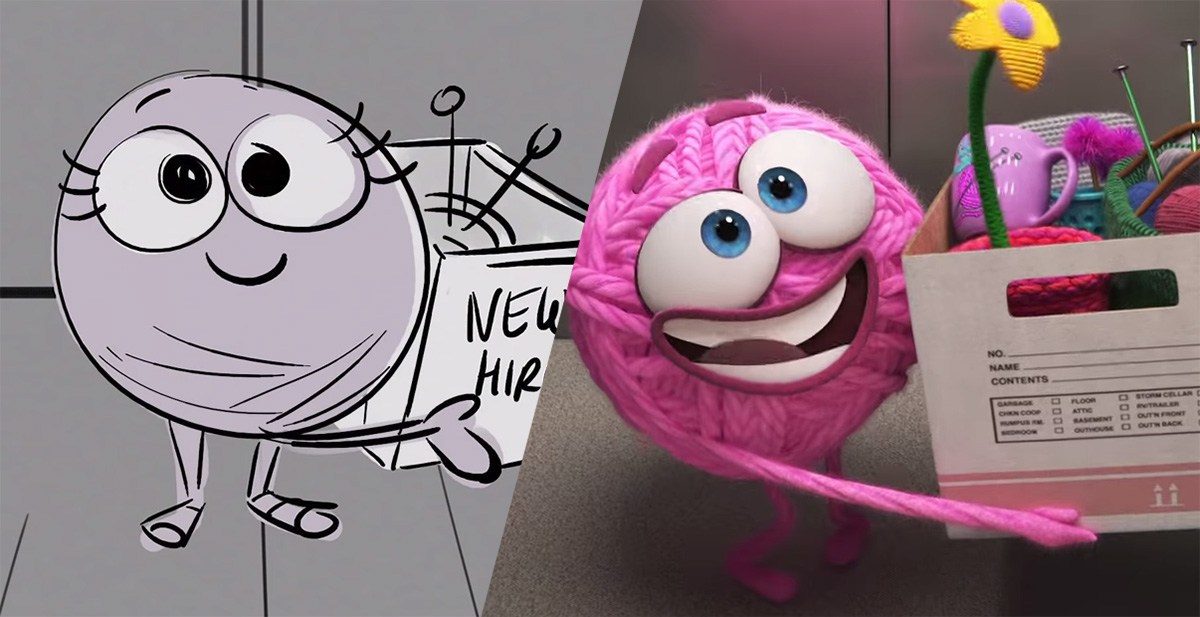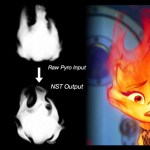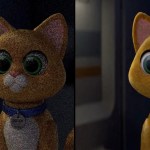The film won Best in Show at this year’s SIGGRAPH Electronic Theater.

The winner of SIGGRAPH 2019’s Electronic Theater Best in Show is Kristen Lester’s Pixar short, Purl. Created as part of the studio’s SparkShorts programme, Purl tells the story of a ball of yarn starting a new job in a highly ‘bro-infused’ workplace.
As part of befores & afters’ #siggraph2019preview week, I talked to Lester about how new ways of making animated content for Pixar were part of the projection on Purl, including taking advantage of motion capture, real-time workflows and re-purposing assets and animation libraries.
b&a: With Purl it seems like you were able to experiment quite a bit – what was it like for you as director to think of different ways to make a short than might normally have been done at Pixar?
Kristen Lester (director, Purl): Well, originally my first idea was that I wanted to try to actually shoot the film in live action. So, I wanted all the men in the office to be real people. And then I was hoping to make Purl an animated character in a real world. But then I realized that because this was the first time I was making a short that I needed the ability to redo things again and again and again, so I could get myself together. And so, that nixed that idea. I was like, ‘Only one new thing at a time, young lady!’ So, I was like, ‘Okay, I’ll make it fully animated then.’
And then our real challenge was the timeline that we had to make the short in, especially with the amount of characters we had to animate. And so, I said, ‘Okay, what do I know that Pixar does really well, and how can I rely on our strengths? And then at the same time, how can I sort of do some careful planning to minimize the amount of work we need to do?’ Because we had a lot of work cut out for us.

So, some stuff we did was, we re-used a lot of assets from various other shows that Pixar had done, and we would change the way they look a little bit, we would change the surfacing, or we would re-model them a little bit to make them look new. But we managed to get a lot of stuff done that way, which was really great.
And then we had a different animation philosophy. For Purl herself we animated her on 2s and 4s, which was great because it gave her the sense of being a creature from a different world, because she literally moved differently than the guys did. But it also helped us get through more animation because we weren’t having to animate as much as we usually do when we animate on 1s.

b&a: Was motion capture part of that mix as well at some point?
Kristen Lester: We did some motion capture early on to give us a base for it. We only used it for the guys, just because there were so many of them. And then what we did is, we animated over the top of that.
And then, on top of that, Pixar has a bunch of stuff that we call our animation library. So, we have a bunch of animations that we’ve gathered from other films that live in this library. We have facial expressions and hand poses and a bunch of other stuff that we were able to use to put into this soup, like motion capture plus straight-up animation, plus the use of animation libraries. It all came together to make this stew that was the animation technique for the guys in the office.

b&a: I read last year about some real-time shading software, Flow, that was used for lookdev on Purl. How did that impact on what you were doing?
Kristen Lester: Flow helped our shaders shade things sooner. It was really helpful that we could look at the way things were reacting, and the way the set was reacting to different types of light. And Purl was a great experiment for it, because I know we used it a lot.
b&a: Just to get a sense of how your team came together to make this film in a relatively short schedule, were you based in one little area in Pixar? And how was that feeling of experimentation while you were making it?
Kristen Lester: We had a little bit of a central hub. We had a story room, which we converted into the central hub for Purl where we had two people. We had our animation lead, or animation supervisor, and our technical lead in one room together, so they could basically work on animation and assets at the same time, which was really great. There was a lot of collaboration that we had to do to get the film to where it ended up being.
I come from a background of design, and so I ended up painting basically all of the lighting keys that helped guide our team of lighters to help light the film. And a lot of the end look of the film was basically just me sitting with our DOP of lighting, and our supe tech. The three of us just sitting at a computer together and looking at the color keys I had painted, plus reference photos, and literally working on the set, and the lighting in real-time together, since we didn’t have a tonne of time to do the whole ‘Here, I did a painting, and now it’s perfect, and I hand it off to you.’ So, there was a lot of overlap, but because of that there was a tonne of collaboration, which was really awesome.
b&a: Out of the different methodologies that you used, for example, taking bits and pieces from different characters or bit of mo-cap, or the animation on 2s and 4s, what conversations did that spur, perhaps, inside Pixar for how they might get used on other shorts, or even features?
Kristen Lester: I think there were definitely some working method styles that I think people were really interested in, and took with them out into the studio after they left the show. In particular, some liked the idea of cross pollination between different departments.
A long time ago I worked at a studio where they really wanted modelling and rigging and lighting to be part of the art department. It was more of a philosophical sort of mindset, which was like: How can we get things into the medium in which they’re going to be viewed as fast as possible? So, how could we get things into the computer as fast as possible? And how can we take traditional artists, who are used to working on paper and with certain media, how can we get them to pair with people who work in the computer, and have them build a product together?

We did that a lot on Purl, and I think a lot of people found that really useful, and they felt like there was a great sense of collaboration and creative ownership over things, because people were actually creating rather than just sort of executing a drawing that they had gotten, or a set of directions. And I think a lot of people felt that, when they moved off the short into the studio, that was something that they wanted to carry forward. And I’ve seen it come up on a couple of shows, and it’s actually been really successful, which is really cool.
Follow along during this special weekly series, #siggraph2019preview, to see what’s coming at SIGGRAPH 2019 in LA in the world of VFX and animation.




























